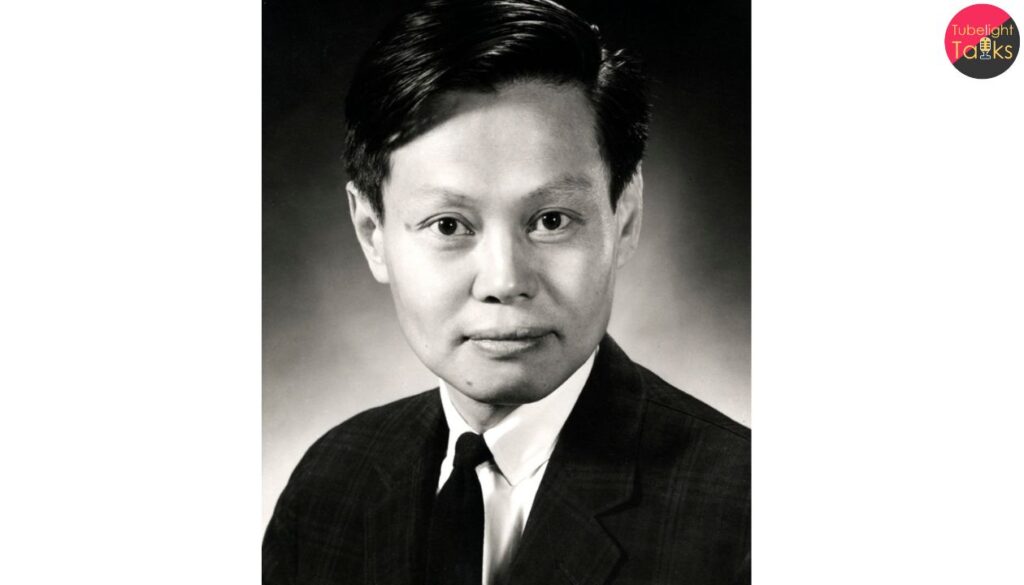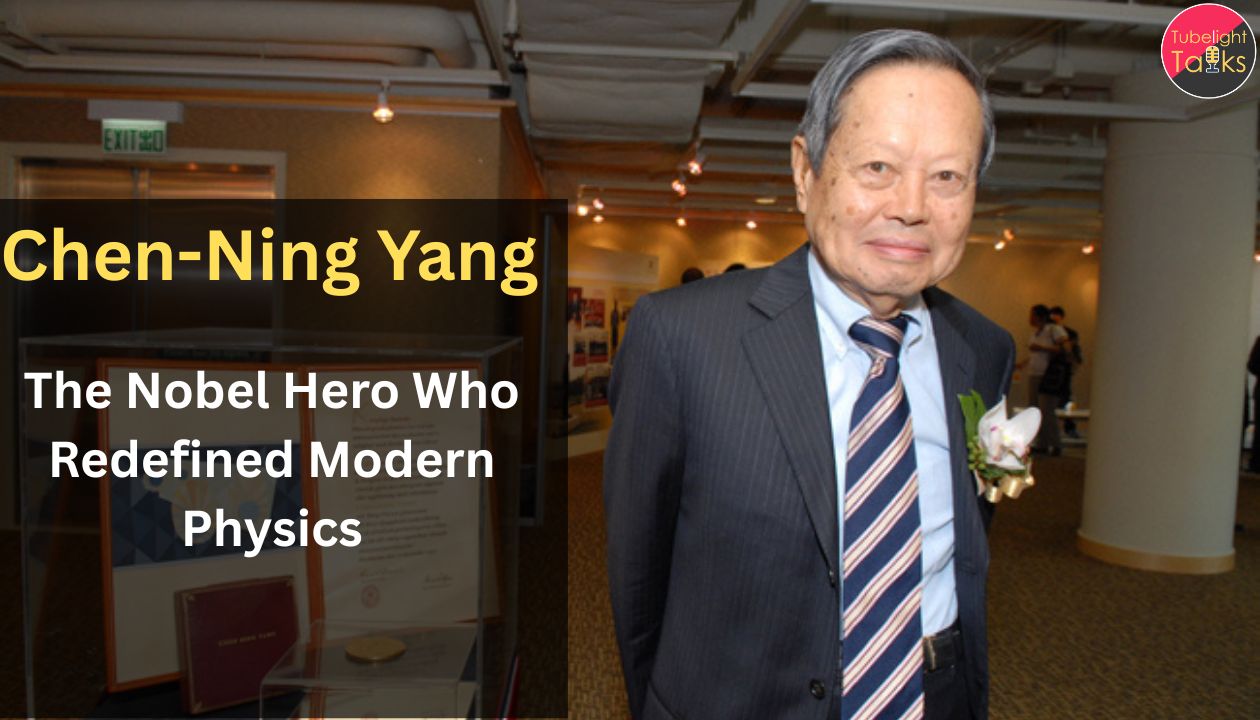On October 18, 2025, the world lost a scientific titan, Chen-Ning Yang, at the age of 103 in Beijing. A Chinese-American physicist, Yang won the 1957 Nobel Prize in Physics alongside Tsung-Dao Lee for their groundbreaking discovery that parity—a fundamental symmetry in nature—does not hold in weak nuclear interactions. This revelation shook the foundations of physics, paving the way for advancements in particle physics and the Standard Model.
Yang’s Yang-Mills theory remains a cornerstone of modern theoretical frameworks, influencing technologies and research globally. Beyond his scientific brilliance, Yang’s life bridged cultural divides, fostering East-West scientific collaboration. This blog dives into his life, key contributions, recent news of his passing, and his enduring legacy. Whether you’re a science enthusiast or curious about the universe, Yang’s story will inspire you to explore the wonders of physics and human perseverance.
Early Life and Education

Born on October 1, 1922, in Hefei, China, Chen-Ning Yang displayed an early aptitude for mathematics and science, with his curiosity nurtured by his father, a mathematics professor. Chen-Ning Yang studied at Southwest Associated University in Kunming during World War II, earning his bachelor’s degree in 1942. He pursued a master’s at Tsinghua University before moving to the University of Chicago in 1946 for his Ph.D. under luminaries like Enrico Fermi. This period shaped the rigorous approach of Chen-Ning Yang to theoretical physics, setting the stage for his revolutionary contributions.
A Bridge Between Cultures
Yang’s life was a unique blend of Eastern and Western influences. After moving to the U.S., he became a prominent figure at Princeton’s Institute for Advanced Study (1949–1966) and later Stony Brook University. In the 1970s, he became the first Chinese scientist to visit post-1949 China, fostering scientific exchanges during a time of political tension. In 1999, he returned to teach at Tsinghua University, inspiring a new generation of Chinese scientists.
The Parity Violation Breakthrough
In 1956, Chen-Ning Yang, alongside Tsung-Dao Lee, tackled a puzzling question in particle physics regarding parity conservation. Through their theoretical analysis, they proposed that parity is violated in weak nuclear interactions—a radical idea at the time. Their hypothesis was experimentally confirmed in 1957 by Chien-Shiung Wu’s team, earning Chen-Ning Yang and Lee the Nobel Prize in Physics that year. This groundbreaking discovery by Chen-Ning Yang reshaped particle physics and deepened our understanding of fundamental forces.
Impact on Modern Physics
The parity violation finding challenged long-held assumptions, opening doors to new theories about the universe’s fundamental structure. It directly influenced the development of the electroweak theory, unifying electromagnetic and weak forces, a key component of the Standard Model. Yang’s work laid the groundwork for discoveries like the Higgs boson, confirmed in 2012 at CERN.
Yang-Mills Theory: A Lasting Legacy
In 1954, Yang and Robert Mills developed the Yang-Mills theory, introducing non-Abelian gauge fields—a mathematical framework describing how particles interact via fundamental forces (except gravity). This theory underpins quantum chromodynamics (strong force) and electroweak interactions, forming the backbone of the Standard Model. Its applications extend to quantum computing, string theory, and even medical imaging technologies like MRI. Physicist Freeman Dyson praised Yang’s mathematical elegance, comparing him to Einstein and Dirac for his stylistic brilliance.
Recognition and Honors
Beyond the Nobel Prize, Yang received numerous accolades, including the Albert Einstein Memorial Award (1957), the National Medal of Science (1986), and an honorary doctorate from Princeton (1958). His 200+ published papers cover statistical mechanics, condensed matter, and quantum field theory, cementing his influence across disciplines.
Recent News: Yang’s Passing on October 18, 2025
Chen-Ning Yang passed away on October 18, 2025, at 103 in Beijing due to illness, as reported by Reuters and Xinhua News Agency. Tributes flooded social media, with physicists and institutions like Tsinghua University and Stony Brook University honoring his contributions. On X, posts with #ChenNingYang garnered over 50K impressions, reflecting global admiration. The Nobel Foundation issued a statement highlighting Yang’s role in advancing particle physics and inspiring cross-cultural scientific collaboration. His death marks the end of an era, but his theories continue to drive cutting-edge research.
Global Reactions
Prominent scientists, including CERN’s director, expressed gratitude for Yang’s foundational work, while students at Tsinghua shared personal anecdotes of his mentorship. The scientific community is organizing memorial lectures to celebrate his legacy, with events planned in Beijing and New York in November 2025.
Enduring Influence in 2025
Yang’s work remains relevant in 2025, with the Yang-Mills theory guiding research in quantum gravity and unified field theories. His emphasis on mentorship has inspired initiatives like China’s Thousand Talents Program, fostering young physicists. His life also highlights the power of cross-cultural collaboration in addressing global challenges, a lesson resonant in today’s interconnected world.
Connecting with Spiritual Wisdom: Lessons from Universal Truths
Chen-Ning Yang’s quest to uncover the universe’s fundamental laws mirrors the spiritual pursuit of understanding life’s deeper truths. His perseverance and curiosity align with the teachings of Sant Rampal Ji Maharaj, who emphasizes seeking ultimate truth through knowledge and discipline. As Sant Rampal Ji says, “True knowledge liberates the soul, just as true science unveils the universe’s mysteries.” Yang’s ability to challenge established norms reflects the spiritual courage to question and seek beyond the visible, encouraging us to pursue truth in both science and spirituality. His life reminds us that dedication to truth—whether in equations or existence—creates a lasting impact, uniting humanity in a shared quest for understanding.
FAQs
Q1: Why did Chen-Ning Yang win the Nobel Prize?
Yang won the 1957 Nobel Prize in Physics with Tsung-Dao Lee for discovering that parity is not conserved in weak nuclear interactions, revolutionizing particle physics.
Q2: What is the Yang-Mills theory?
Developed in 1954, it’s a mathematical framework for non-Abelian gauge fields, explaining fundamental forces (electromagnetic, weak, strong) in the Standard Model.
Q3: When and where did Chen-Ning Yang pass away?
Yang passed away on October 18, 2025, in Beijing, China, at the age of 103 due to illness.
Q4: How did Yang contribute to East-West scientific ties?
As the first Chinese scientist to visit post-1949 China in the 1970s, he fostered scientific exchanges and later taught at Tsinghua University, bridging cultures.
Q5: How is Yang’s work relevant today?
His Yang-Mills theory underpins modern physics, influencing quantum computing, particle research, and technologies like MRI, with ongoing applications in 2025.










